Sunday, August 26, 2007
Sa Pa, Vietnam, 27-28 July 2007: Minority Peoples
Hmong And Dzao Women
Labels: ladies, people, Vietnam
Friday, August 10, 2007
Changsha, China, 1 July 2007: Flight CZ6306
Long Day's Journey Into Night
Labels: China, ladies, people, transport
Saturday, October 21, 2006
Berlin, Germany, 11-15 Oct 2006: Gemaldegalerie Paintings
Ladies Of A Certain Vintage
West Berlin's Gemaldegalerie has a remarkable collection 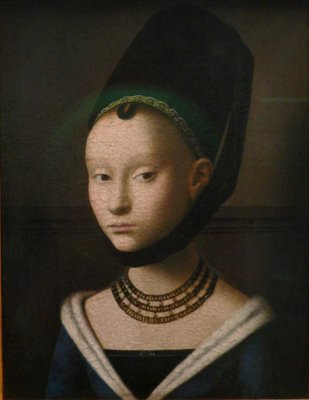 of early Netherlandish and Italian Renaissance paintings. Achingly vivid depiction of of early Netherlandish and Italian Renaissance paintings. Achingly vivid depiction of 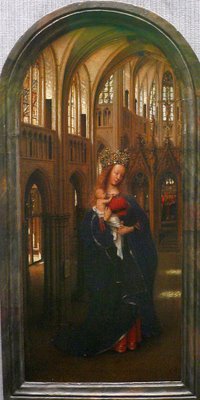 Woman is a major thematic cord that binds religious and secular art. Woman is a major thematic cord that binds religious and secular art.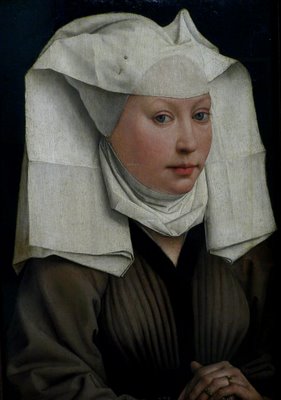 In Madonna in the Church by Jan van Eyck, a larger-than-life Mary stands inside an intricately etched church interior, cradling the infant Jesus in her arms. A supernatural amber aura emanates from, and transfigures, the central figures. Rogier van der Weyden, van Eyck's contemporary and equal, imbued his subjects with unparalleled emotional depth and intensity that was revolutionary in his time. Woman Wearing a Gauze Headdress conveys with delicate sensitivity a Flemish noblewoman's demure confidence. The white gauze headdress, primly pinned into place, is a tour-de-force of finely woven details, translucency and textures. Petrus Christus' masterpiece Portrait of a Young Girl enthralls with the subject's petulant half-smile and detached gaze, drawing one to wonder, "Who is she?" |
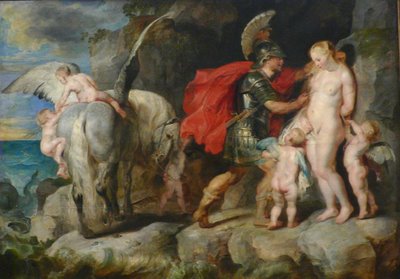 Peter Paul Rubens reenacted the Greek myth of Perseus Freeing Andromeda from certain ravage by the seamonster, to whom she has been sacrificed, with dramatic free brush strokes and luscious colours. She glows, nude, bowing in gratitude, as he, incarnadine cape furiously flapping, rushes forward. Peter Paul Rubens reenacted the Greek myth of Perseus Freeing Andromeda from certain ravage by the seamonster, to whom she has been sacrificed, with dramatic free brush strokes and luscious colours. She glows, nude, bowing in gratitude, as he, incarnadine cape furiously flapping, rushes forward.More contemplative and sedate are Jan Vermeer's works. A magician at creating myriad light effects, his leitmotif is of scenes of everyday life set in rooms lit by natural light filtering in through open windows. The Woman With a Pearl Necklace holds her necklace carefully to the light, admiring its reflection in the mirror. In The Glass of Wine, we are voyeurs of the secret love life of the couple: witnessing the precise moment that temperance succumbs to indiscretion as wine trickles from the glass into her quivering hitherto chaste lips.   |
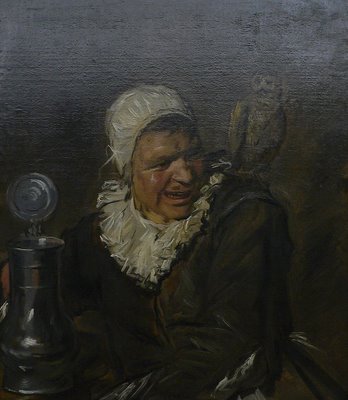 Frans Hals' Portrait of Malle Babbe incisively captures the crude sneering laugh of tavern proprietress 'Mad Babbette' aka 'The Witch of Haarlem'. An owl perched precariously on her left shoulder, she gruffly twists her thick torso around to countenance her Frans Hals' Portrait of Malle Babbe incisively captures the crude sneering laugh of tavern proprietress 'Mad Babbette' aka 'The Witch of Haarlem'. An owl perched precariously on her left shoulder, she gruffly twists her thick torso around to countenance her 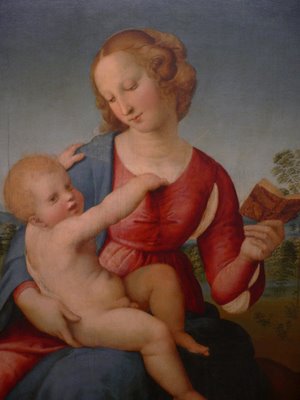 customers with choice curses, giving as good as she gets. customers with choice curses, giving as good as she gets.The Dutchman Hal's restricted dark palette and grimy realism contrast sharply with the luminous pastels and ethereal beauty of the Italian Raffaello Sanzio's Colonna Madonna (begun by Raffaello, completed by Ridolfo Ghirlandaio). Here, Mary's fresh-faced buxom country maiden fondly gazes at and quietly adores baby Jesus seated on her lap. He playfully clutches her decolletage, looking at us, grinning. The taut outstretched right arm artfully connects the holy duo compositionally. |
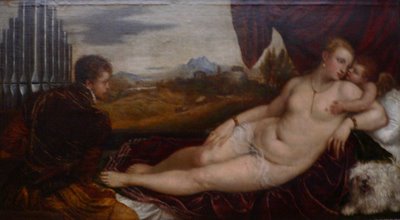 Tiziano Vecellio painted four works of Venus with musicians, allegories to Love, Music's Muse. In Venus and the Organ Player, she is object of the latter's ogling. She, cool to his infatuation, is alas unattainable. Tiziano Vecellio painted four works of Venus with musicians, allegories to Love, Music's Muse. In Venus and the Organ Player, she is object of the latter's ogling. She, cool to his infatuation, is alas unattainable.Inspired by Botticelli's similar painting, Piero di Cosimo's delightful Venus, Mars and Cupid shows Venus and her lover Mars in an idyllic landscape, the latter exhausted and spread out in deep post-coital slumber. Mars is utterly vanquished, his armour is in disarray; his arms, cherubs' toys. Feted by her son Cupid and a white rabbit, symbol of fecundity, supreme Venus presides over her spoils. Love conquers all. 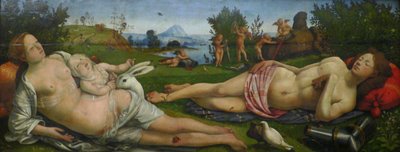 |
Labels: Berlin, Germany, ladies, museum, painting
Wednesday, October 18, 2006
Berlin, Germany, 11-15 Oct 2006: Ägyptisches Museum
Berlin's Most Beautiful Woman
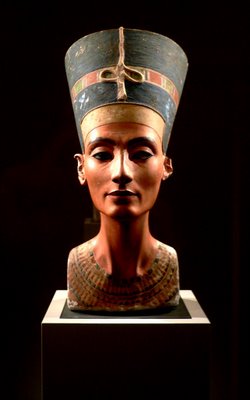  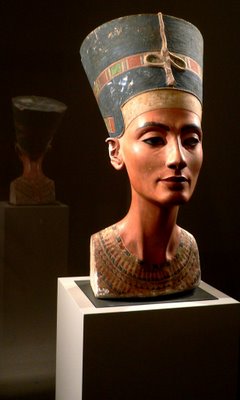 The painted plaster bust of Queen Nefertiti is the jewel of Berlin's Egyptian Collection, currently housed on the upper floor of the Altes Museum. The classic lines of the heavy 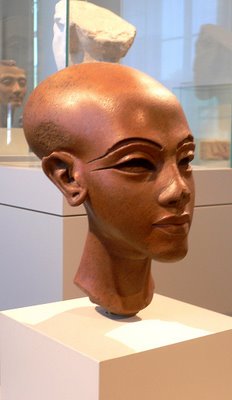 flat-topped crown sitting on the head supported by a sleek elongated neck, the deep vibrant colours, and the life-like portrayal of the ageless face, faintly lined at the outer edges of the lips and below the eyes, seem almost modern. Immediately, one senses the palpable tautness of the neck muscles and the regal serenity of her enigmatic one-eyed gaze. Unlike the right eye which possesses a dark crystal pupil, the left was left strangely unadorned. The bust was never complete, but instead probably used as a model in the studio of her great sculptor-creator Thutmose, where she was discovered unperturbed more than 3000 years later in Amarna. flat-topped crown sitting on the head supported by a sleek elongated neck, the deep vibrant colours, and the life-like portrayal of the ageless face, faintly lined at the outer edges of the lips and below the eyes, seem almost modern. Immediately, one senses the palpable tautness of the neck muscles and the regal serenity of her enigmatic one-eyed gaze. Unlike the right eye which possesses a dark crystal pupil, the left was left strangely unadorned. The bust was never complete, but instead probably used as a model in the studio of her great sculptor-creator Thutmose, where she was discovered unperturbed more than 3000 years later in Amarna.Look also at other sculptures of Nefertiti in the museum. This one to the left reveals a youthful Nefertiti with somewhat more filled-out cheeks and a perfectly-shaped cranium. Another shows her more mature, standing with haunched shoulders, breasts drooping over a nascent middle-age paunch. In all these depictions, her person and unmistakable humanness transcend millennia to reach out to, grab and touch us. |
Labels: art, Berlin, Germany, ladies, museum, sculpture
Wednesday, August 09, 2006
Paris, France, 14 Dec 2003: Musee Louvre
Les trois dames et plus
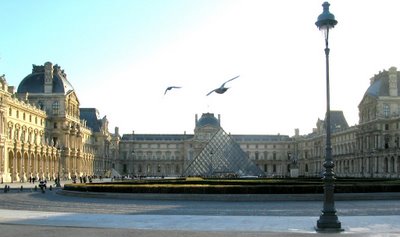 Musee du Louvre is the largest repository of antiquities and art in the world. Restoration of the august institution met with initial public outcry, but I M Pei's pyramids soon became the Louvre's favourite icons. The understated underground entrance atrium and brilliant light-filled courtyards in the Richelieu wing - Cour Marly and Cour Puget - are the architectural centrepieces from which collection-rich galleries radiate. 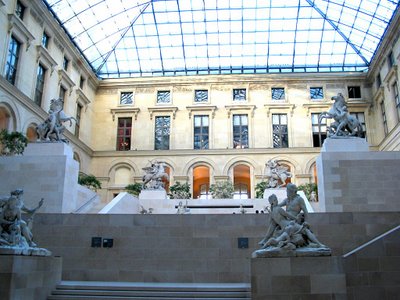 |
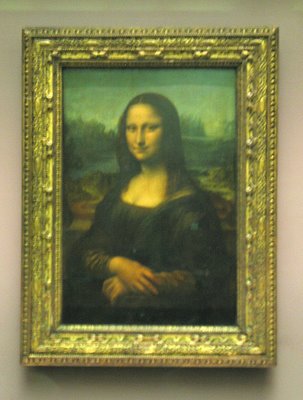 Three pieces - da Vinci's Mona Lisa, Venus de Milo and the Winged Victory of Samothrace - are the Louvre's undisputed mistresses. Priceless. Enigmatic. Ethereal. 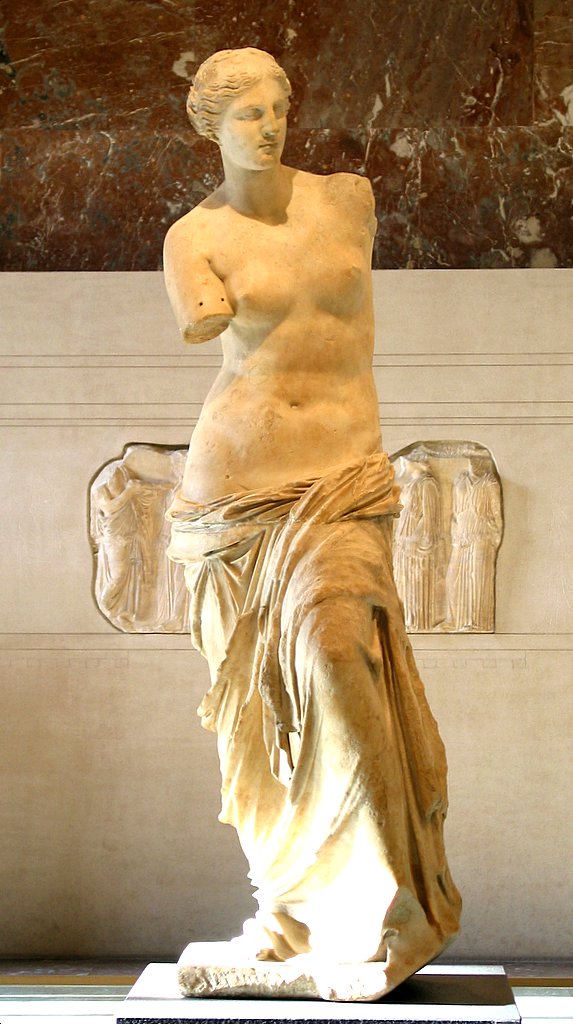 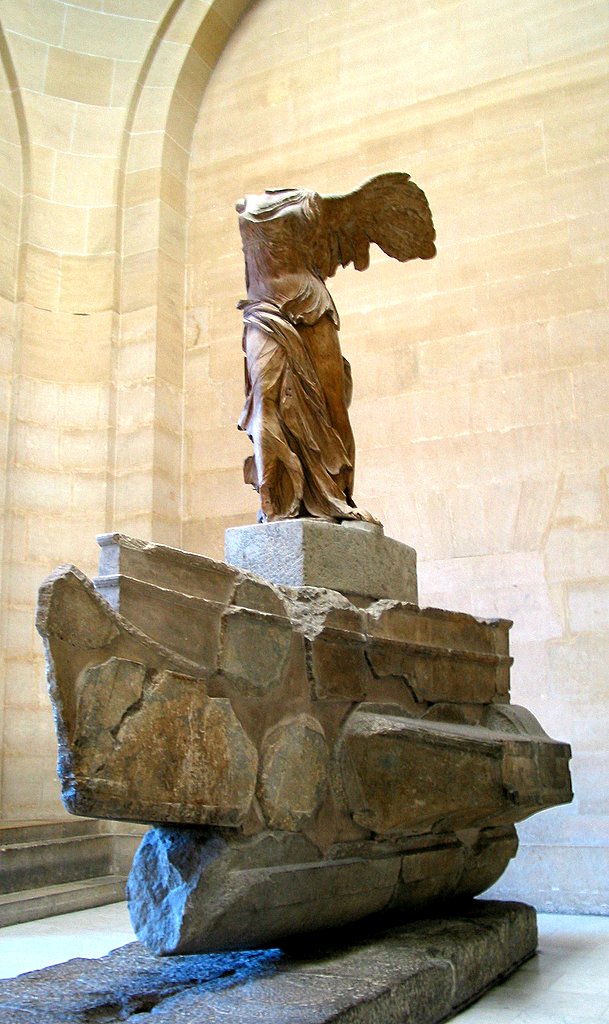 |
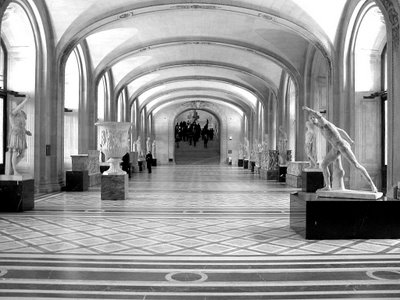 Greek statuary line the sculpture gallery. Renaissance sculptors recapture Grecian artistry. Michelango's Rebellious and Dying Slaves convey a life-like contrast in curtailed muscular tension and flaccid resignation. Poetry in marble.   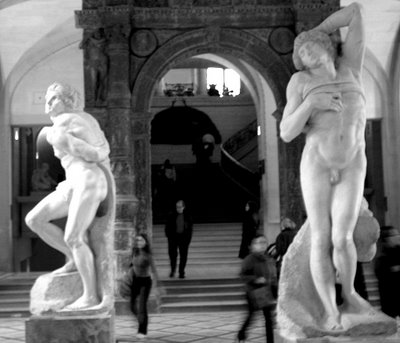 |
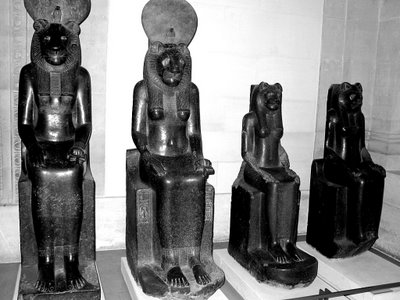 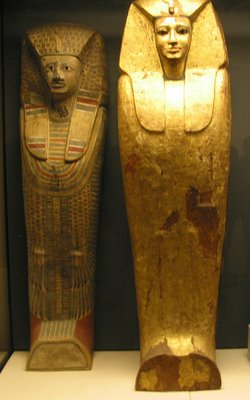 Antiquities from Egypt and the Near East, bounty from Napoleon's Egyptian expeditions, are a collection highlight. Hammurabi's Code is one of the first recorded wriiten laws, preserved in Sumerian cuneiform script on an imposing stela. Awesome.  |
Labels: architecture, art, France, ladies, museum, painting, Paris, sculpture

Licensed under Creative Commons Attribution-NonCommercial-NoDerivs 2.5 License

These are the 30 countries that I have ever set foot on. Airport stopovers don't count!
